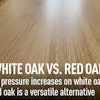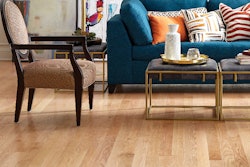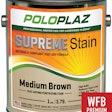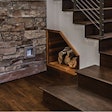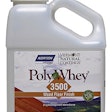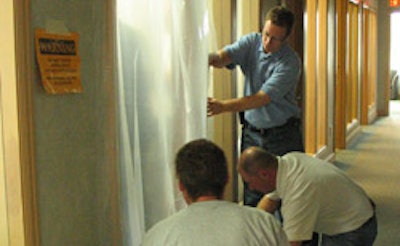
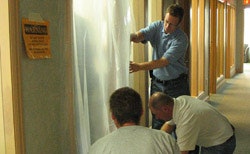 Contractors at a Lead Safe Renovator class in Madison, Wis., prepare a doorway for dust containment.
Contractors at a Lead Safe Renovator class in Madison, Wis., prepare a doorway for dust containment.Compliance
Lead-safe practices set forth by the rule must be followed when disturbing more than 6 square feet of a coated surface in any pre-1978 child-occupied facility or home. Also, the rule only applies to individuals working for compensation, so homeowners who do their own work are exempt if they are working on a single-family home.
To clarify, "coatings" includes any paint, stain, shellac or varnish - the rule does not just apply to paint. Unfortunately, there is a chance nearly any coated surface contains lead, including stained wood. This means that wood flooring contractors performing any remodeling work (like floor sanding or removing baseboards) that disturbs any coated surface must follow the new rule.
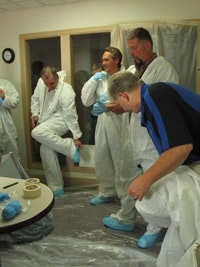 Contractors try on dust suits during a Lead Safe Renovator class in Madison, Wis.
Contractors try on dust suits during a Lead Safe Renovator class in Madison, Wis.Exemptions
There are some exceptions to having to follow the lead-safe practices set forth in the rule. For example, you're exempt from the rule if you're working in housing for the elderly or disabled, housing with zero bedrooms (like efficiencies, dorms or hotels), or you're working in housing that has been tested and proven to be free of lead-based coatings. You're also exempt if you're working on a building that was built after 1977, but you must have some legal document showing this.
Certification
There are two types of certification - individual and firm - and you need both of them. First, a company must have at least one worker who has gone through the new eight-hour, EPA-accredited training session; this makes that worker a "certified renovator." The cost of individual certification is set by training providers, not by EPA, so the cost varies; usually it's around $300. Next, that individual's company must become a Lead-Safe Certified Firm, which costs $300 for all companies. (To compensate for a dearth of training providers, EPA delayed the firm and individual certification requirements until Oct. 1 and Dec. 31, respectively, but contractors working in target housing are still required to follow lead-safe work practices. EPA has said it is simply giving firms more time to get certified.) A certified renovator is required to be on each job site for the posting of work area signs, initial job site contamination setup and final clean-up. That worker isn't required to be on the job site at all times; he just needs to be available by phone while coated surfaces are under renovation. This might enable your company to get by with having just one certified renovator. Both certification types last for five years.
At EPA-approved training, topics range from what is covered (and excluded) under the rule, regulated work practices, cleaning procedures, and required documentation for all jobs. Also, there is a significant portion of hands-on training dedicated to new work practices that have been found to limit exposure of lead to occupants.
I recommend you review the requirements of the law to determine if your company will need to comply so you can protect your business and clients. For more information, visit the EPA's website on the RRP here.
Find accredited RRP training providers near you at this website.












